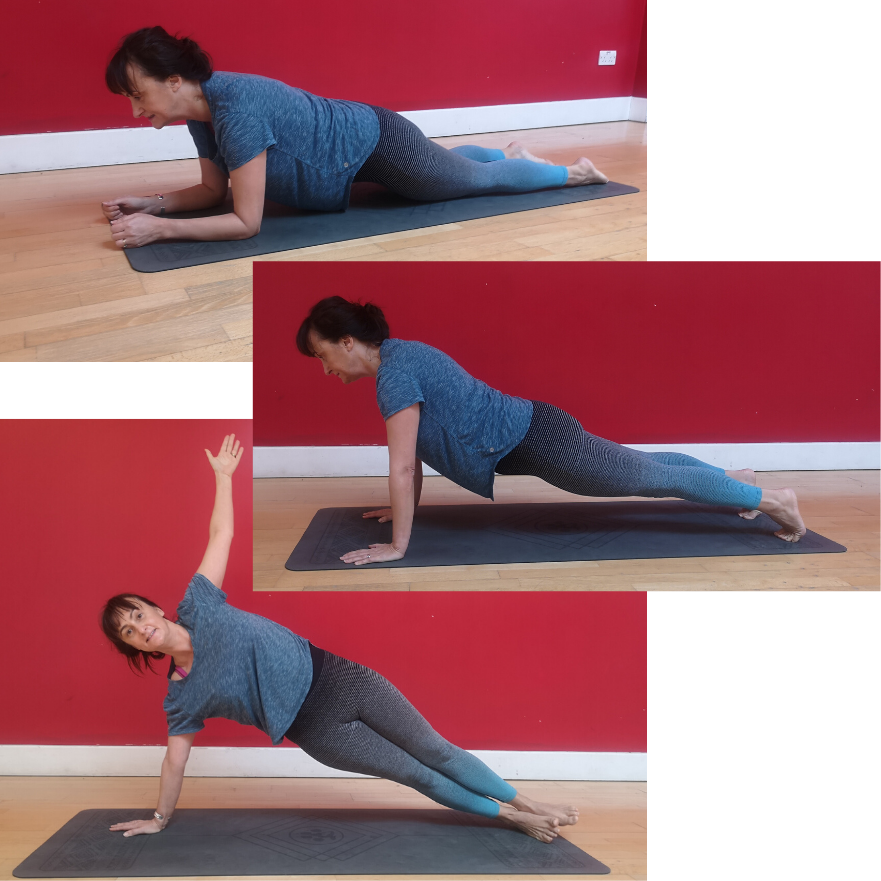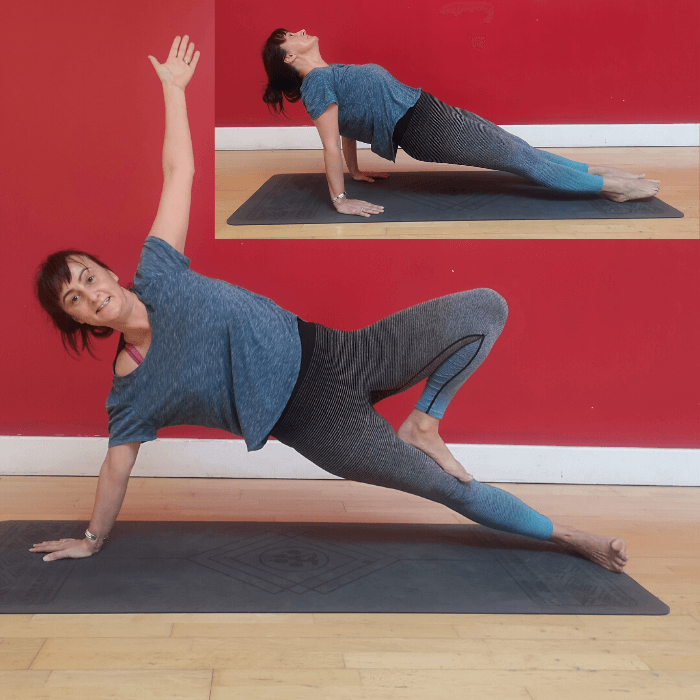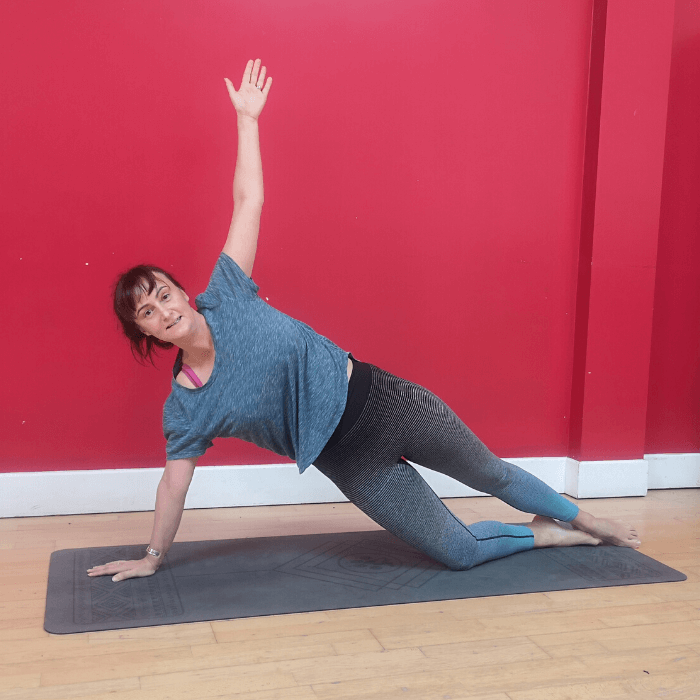
18th February 2020
Plank pose: Kumbhakasana
Planks are great for core stability and any of us (especially those with with bad backs) should be working towards 30 to 60 second holds on both front and side planks.
Alignment is very important so do try and be aware of that – perhaps practice in front of a mirror if you can and avoid banana shapes.
There are three typical variants of the plank pose shown in the photo below. The first is a plank on the knees – ideal for those with limited upper body and abdominal strength. The second is a high plank on the hands and feet with straight arms. The third is side plank with the upper arm extended.
Low plank
Ideally start in Dolphin Pose (with the elbows on the floor directly under the shoulders), knees bent but otherwise perhaps from tabletop.
Walk your feet back until your shoulders are directly over the elbows and your torso is parallel to the floor
Press your inner forearms and elbows firmly against the floor
Firm your shoulder blades against your back and spread them away from the spine
Look straight down at the floor, keeping your throat and eyes soft
Stay anywhere from 30 seconds to a minute
Release your knees to the floor with an exhale
High plank
This is the classic high plank. Notice how straight the alignment is – no bent elbows and the bottom is not sticking up.
To get into the posture start in downward facing dog and plant your hands with fingers wide.
Gently move forward into plank bringing the shoulders just above the wrists without bending the elbows.
Keep your naval drawing back to your spine
Push your heels back and hug the backs of your knees towards the ceiling
The chest, shoulders, neck and face should be parallel to the floor.
The bottom should not be either sticking up like a hump in the road or bending down like a banana.
The body here is balancing on the wrists and the toes but ensure the weight of the body is spread evenly and not on the shoulders and the wrists alone.
You can always bring your knees down for a half plank instead
Variation with the knees bent and even elbows on the mat if the full plank is currently too much.

Side plank – Vasisthasana
Start in downward dog.
Move your right hand into the centre of the mat under the shoulders. Shift the weight into your right hand; bring your feet together so your inner ankles and thighs are touching.
Roll to the outside blade of your right foot to shift to side plank, stack your feet together or apart.
Float your left hand towards the sky, right wrist under shoulders. The left hip should be stacked above the right hip. Keep the hips high without sinking.
Gaze to the hand
Alternatively, you may place your Left knee/shin on the ground).
Engage the core, remain grounded through the right palm, pushing yourself away from the mat.
Side Plank Variations and Modifications
- Lift the upper leg high (taking the bind with the upright hand if you would like)
- Lift the upper leg into a tree pose (fallen tree)
- One knee on the ground is a less intense variation

Upward Facing Plank
One other variation is to put the hands behind (fingers pointing towards the toes). Lift the chest and hips up and have a straight line from the shoulders to the toes.
The head can stay in line with the spine or alternately engage a chin lock and look down towards the feet.
Contraindications:
Plank Pose should not be practiced if one is suffering from injury in the arms or wrists.
Not to be practiced if suffering from injury in the legs, including the upper leg at the thighs.
Anyone suffering from low or high blood pressure should avoid this pose as a lot of pressure is felt at the chest while balancing in the pose.
Carpal Tunnel Syndrome patients should avoid Plank Pose completely as there is pressure on the elbows and the wrists.